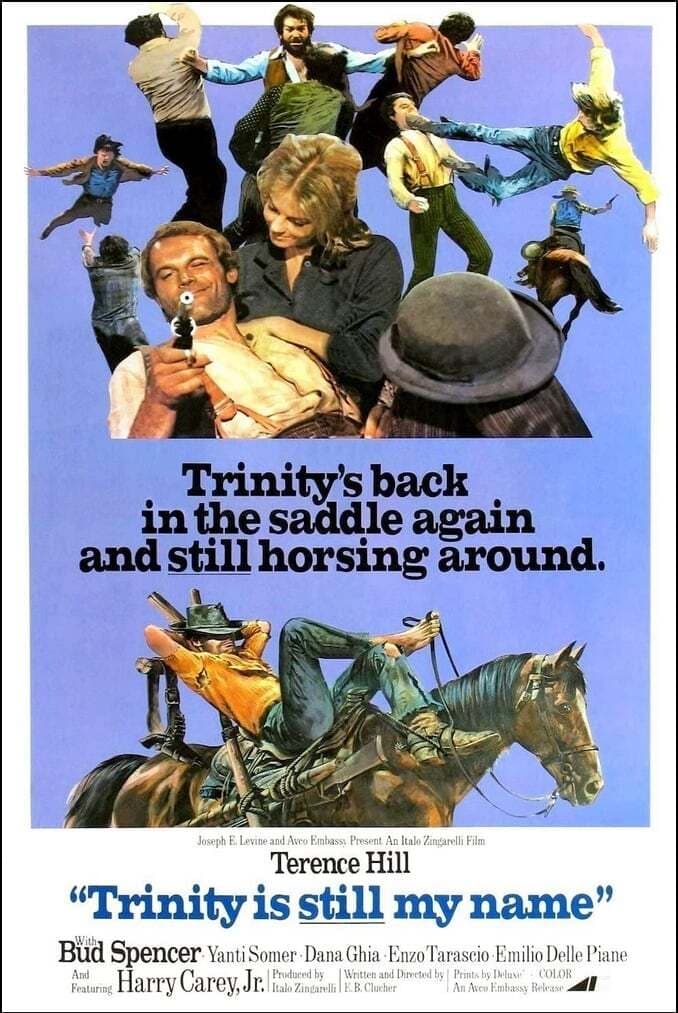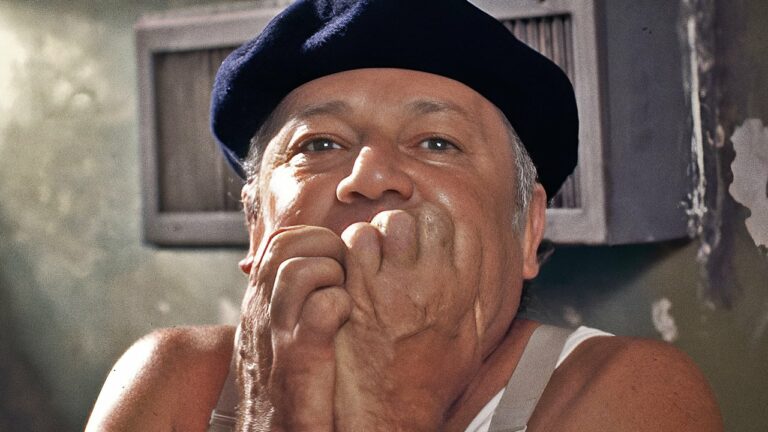
Adiós, Sabata (Indio Black, sai che ti dico: Sei un gran figlio di…), released in 1970, is a vibrant and action-packed entry in the Spaghetti Western genre. Directed by Gianfranco Parolini (credited as Frank Kramer) and starring Yul Brynner in the lead role, the film is often considered a loose sequel to Sabata (1969), which starred Lee Van Cleef as the titular character. While Brynner’s portrayal of Sabata (referred to as Indio Black in some versions) deviates from Van Cleef’s rendition, the film retains the stylish action, quirky characters, and larger-than-life storytelling that defined its predecessor.
With its rich visuals, dynamic score, and a plot steeped in revolutionary intrigue, Adiós, Sabata remains a standout in the Spaghetti Western canon. This article delves into the film’s story, themes, characters, production, and legacy, exploring why it continues to captivate fans of the genre.
Plot Summary: Revolution and Retribution in the Wild West
Set during the Franco-Mexican War (1861–1867), Adiós, Sabata follows the enigmatic gunslinger Sabata as he becomes embroiled in a revolutionary struggle against the French occupation of Mexico. Sabata is hired by a group of Mexican rebels to help recover a cache of gold stolen by the French-backed tyrant Colonel Skimmel (Gerard Herter). The rebels plan to use the gold to fund their fight for freedom, but the heist quickly turns into a labyrinthine game of deception, greed, and betrayal.
Sabata, armed with his iconic lever-action rifle and unshakable confidence, teams up with a band of eccentric allies, including Escudo (Ignazio Spalla, billed as Pedro Sanchez), a spirited and resourceful revolutionary, and Ballantine (Dean Reed), a sharp-shooting gambler with questionable loyalties. Together, they face off against Skimmel and his army of French soldiers in a series of explosive confrontations.
As the plot unfolds, Sabata’s motives are called into question, and the line between heroism and opportunism becomes increasingly blurred. The film builds to a spectacular finale, filled with elaborate stunts, dramatic showdowns, and the classic Spaghetti Western theme of justice through chaos.
Themes: Revolution, Greed, and Moral Ambiguity
1. Revolution and Freedom
At its core, Adiós, Sabata is a story of rebellion against oppression. The film’s setting during the Mexican struggle for independence from French rule provides a historical backdrop for its exploration of revolution, loyalty, and sacrifice. While the rebels are driven by ideals of freedom and justice, their methods and alliances are often complicated by personal ambition and betrayal.
2. Greed and Betrayal
The stolen gold serves as a central plot device, symbolizing both the promise of liberation and the corrupting influence of wealth. Many of the characters, including Sabata himself, are motivated by personal gain, and the film constantly challenges the audience to question their true intentions.
3. The Antihero Archetype
Sabata embodies the quintessential Spaghetti Western antihero: charismatic, skilled, and morally ambiguous. His actions often blur the line between self-interest and altruism, reflecting the genre’s rejection of traditional notions of heroism.
4. The Power of Unity
While Adiós, Sabata highlights individual prowess, it also underscores the importance of collaboration and camaraderie. The diverse team of characters that Sabata assembles is key to overcoming the seemingly insurmountable odds they face.
Characters: A Cast of Quirky and Memorable Figures
1. Sabata (Yul Brynner)
Yul Brynner’s portrayal of Sabata is a departure from Lee Van Cleef’s stoic, sardonic interpretation. Brynner brings a commanding presence and a sense of flamboyance to the role, complemented by his distinctive wardrobe, which includes an all-black outfit and a signature rifle. His Sabata is enigmatic and unpredictable, exuding confidence and charm while remaining morally ambiguous.
2. Escudo (Ignazio Spalla)
Escudo, a cheerful and crafty revolutionary, provides much of the film’s humor and heart. Played by Spaghetti Western regular Ignazio Spalla, Escudo’s loyalty and resourcefulness make him a vital ally to Sabata, and his comedic antics add levity to the story.
3. Ballantine (Dean Reed)
Ballantine is a gambler and sharpshooter whose shifting allegiances add an element of suspense to the narrative. Dean Reed’s performance captures the character’s charisma and cunning, making him an intriguing foil to Sabata.
4. Colonel Skimmel (Gerard Herter)
As the film’s primary antagonist, Colonel Skimmel epitomizes arrogance and ruthlessness. Gerard Herter delivers a memorable performance, portraying Skimmel as both a cunning strategist and a cold-hearted tyrant. His opulent lifestyle and calculated cruelty make him a fitting villain for the story.
Gianfranco Parolini’s Direction: Style and Spectacle
Director Gianfranco Parolini’s flair for combining action and spectacle is on full display in Adiós, Sabata. Known for his inventive approach to Spaghetti Westerns, Parolini infuses the film with a sense of fun and adventure that balances its darker themes.
1. Elaborate Action Sequences
The film is packed with thrilling action scenes, from gunfights and chases to explosive confrontations. Parolini’s use of inventive stunts and dynamic camera angles keeps the audience engaged and heightens the tension.
2. Visual Style
Cinematographer Sandro Mancori captures the rugged landscapes and vibrant colors of the Mexican setting, creating a visually striking backdrop for the story. The film’s use of dramatic lighting and close-ups adds to its dramatic intensity.
3. Quirky Elements
In true Spaghetti Western fashion, Adiós, Sabata embraces eccentricity. From Sabata’s elaborate weaponry to the colorful personalities of his allies and enemies, the film revels in its larger-than-life style.
Music: A Lively and Memorable Score
The score, composed by Bruno Nicolai, is a standout feature of Adiós, Sabata. Nicolai’s music combines traditional Western motifs with vibrant, Latin-inspired melodies that reflect the film’s Mexican setting. The rousing main theme, complete with triumphant horns and energetic rhythms, perfectly complements the film’s adventurous tone.
Production and Casting: A Notable Shift
Originally conceived as a direct sequel to Sabata (1969), Adiós, Sabata underwent significant changes during production. Due to scheduling conflicts, Lee Van Cleef was unavailable to reprise his role as Sabata, leading to the casting of Yul Brynner. While some versions of the film rename the character to Indio Black to distinguish it from the original, it is commonly recognized as part of the Sabata series.
Brynner’s casting brought a unique energy to the film, with his theatrical performance and distinct look adding a fresh dimension to the character. His background as a Hollywood star also helped the film gain international attention.
Legacy: A Beloved Spaghetti Western Adventure
1. Part of the Sabata Trilogy
While it deviates from the tone and style of the first film, Adiós, Sabata is a worthy continuation of the Sabata legacy. Its inventive storytelling and memorable characters have earned it a dedicated fanbase.
2. Influence on the Genre
The film’s mix of historical context, colorful characters, and high-stakes action reflects the evolution of the Spaghetti Western genre in the 1970s. Its playful tone and emphasis on spectacle have influenced later Westerns and action-adventure films.
3. Cult Following
Like many Spaghetti Westerns, Adiós, Sabata has gained a cult following over the years. Its blend of humor, action, and political intrigue continues to resonate with fans of the genre.
FAQs
1. Is Adiós, Sabata a sequel to Sabata?
Yes, Adiós, Sabata is often considered a loose sequel to Sabata (1969). However, it features Yul Brynner in the lead role instead of Lee Van Cleef.
2. Who directed Adiós, Sabata?
The film was directed by Gianfranco Parolini, also known as Frank Kramer, who directed the original Sabata film.
3. What is the main theme of the film?
The film explores themes of revolution, greed, and moral ambiguity, set against the backdrop of the Mexican struggle for independence.
4. Who composed the film’s score?
The score was composed by Bruno Nicolai, whose music adds energy and atmosphere to the film.
5. How does Yul Brynner’s Sabata differ from Lee Van Cleef’s?
Brynner’s Sabata is more flamboyant and theatrical, with a distinct charm and commanding presence that sets him apart from Van Cleef’s stoic and sardonic portrayal.
Conclusion: A Vibrant and Unique Spaghetti Western
Adiós, Sabata is a bold and entertaining Spaghetti Western that captures the adventurous spirit of the genre while offering a fresh perspective on its iconic antihero. With its dynamic performances, inventive action, and stylish direction, the film stands as a testament to the creativity and enduring appeal of Italian Westerns.
Whether viewed as a sequel or a standalone adventure, Adiós, Sabata remains a thrilling and memorable entry in the annals of Spaghetti Western cinema.






